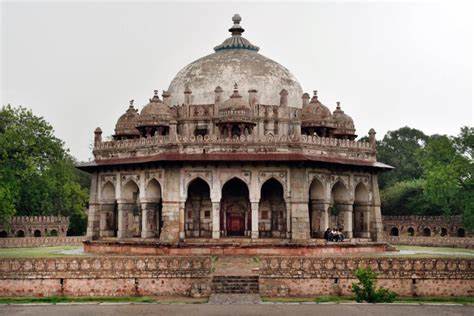Capital of Kanishka
The capital of Kanishka, a prominent ruler of the Kushan Empire, was likely Purushapura, which is modern-day Peshawar in Pakistan. Kanishka ruled the Kushan Empire from around 127 CE to 150 CE, and his reign is known for its significant cultural, political, and economic contributions to the region. Peshawar served as an important center for trade, culture, and administration during his rule.
Second Capital of Kanishka
The ancient city of Mathura was the second capital of Kanishka. The area had a boom in art and culture under the great Kushanas, which is now famously recognised as the Mathura School of Art. While many of Mahakshatrapa Sodasa’s successors ruled as Kushans vassals, including the Indo-Scythian “Great Satrap” Kharapallana and the “Satrap” Vanaspara, who both pledged allegiance to the Kushans in an inscription at Sarnath dating to the third year of the reign of the Kushan emperor Kanishka the Great around 130 CE, the Kushans eventually took control Under the Kushan empire, which had Mathura as one of its major cities, Mathuran art and culture attained their pinnacle.
Kapisa (now Bagram, Afghanistan), Purushapura (modern Peshawar, Pakistan), and Takshasila/Sirsukh were the previous capitals of the Kushans (modern Taxila, Pakistan). The era of the great Kushan monarchs Kanishka, Huvishka, and Vasudeva, whose reign symbolises the Golden Age of Mathura sculpture, saw the greatest activity at the Mathura ateliers. Following the collapse of the Kushan Empire, the Nagas controlled Mathura during the third century.
Capital of Kanishka: Who was King Kanishka?
The Kushan dynasty’s Kanishka was an emperor who ruled from from 127 to 150 CE, when the empire was at its height. He is well-known for his accomplishments in the military, politics, and religion. Kanishka, a descendant of Kujula Kadphises, the creator of the Kushan empire, ruled an empire that spanned Central Asia, the Gandhara, and the Gangetic plain to Pataliputra. His dominion had two major capitals: Puruapura, or Peshawar, in Gandhara, and Mathura, or another important capital. In Tripuri, Kanishka coins were discovered.
His conquests and support of Buddhism were crucial to the Silk Road’s growth as well as the spread of Mahayana Buddhism from Gandhara to China over the Karakoram Mountains. He switched the empire’s official language of governance from Greek to Bactrian around 127 CE.
Kanishk ki Rajdhani Kahan Thi
Kanishka, also referred to as Kanishka the Great, was a monarch of the Kushan Empire who resided in Purushapura in Gandhar as his seat of government. The Silk Road was established under Kanishka’s dominion, and Mahayana Buddhism was introduced to China. In the past, researchers thought that the Saka calendar era started in 78 CE, when Kanishka ascended the Kushan empire. The second capital of Kanishka was the historic city of Mathura. Under the great Kushanas, the region had a surge in art and culture, which is now renowned as the Mathura School of Art.

Map of the Kushan Empire of King Kanishka
Capital of Kanishka History
There are two origins theories for Kanisha, both of which assume a distinct Kanishka dynasty. According to an older Sten Konow, Kanishka was summoned as an ethnic ally during troubled times following Vima’s rule and came from Khotan. According to a Tibetan narrative, King Vijayakirti, King Kanika, and the king of Guzan led a Khotanese voyage to India around the year 120, which Konow uses as evidence to support his theory.
According to a similar theory put out by Roman Ghirshman, Kanishka was first ruler of Kashmir before ascending to the position of dynastic suzerain. In addition to the Rajatarangini, where the list of Turushka kings of Kashmir listed Kanishka’s name as the third in a series along with the names of Hushka and Jushka, he also references the above-mentioned Khalatse inscription, which may allude to Kushan influence reaching the northeastern part of Kashmir. Last but not least, evidence of Kanishka’s efforts to advance the Buddhist faith in Kashmir suggests that he preferred the area over others and established Peshawar as his capital in order to be close to Kashmir.
He belonged to the Yuezhi ethnic group, and Tocharian was possibly his mother tongue. An outstanding genealogy of the Kushan rulers known as the Rabatak inscription proves that Kanishka was Vima Kadphises’ successor. The Rabatak inscription describes the relationship between Kanishka and other Kushan kings. Kanishka names Kujula Kadphises as his great-grandfather, Vima Taktu as his grandfather, Vima Kadphises as his father, and himself as Kanishka in the list of kings who ruled before him.
kanishk ki rajdhani- कनिष्क की राजधानी कहां थी
कनिष्क, जिसे कनिष्क महान भी कहा जाता है, कुषाण साम्राज्य का एक राजा था जो अपनी सरकार की सीट के रूप में गांधार के पुरुषपुरा में रहता था। कनिष्क के प्रभुत्व के तहत सिल्क रोड की स्थापना की गई थी, और महायान बौद्ध धर्म चीन में पेश किया गया था। अतीत में, शोधकर्ताओं ने सोचा था कि शक कैलेंडर युग 78 ईस्वी में शुरू हुआ था, जब कनिष्क ने कुषाण साम्राज्य पर चढ़ाई की थी। कनिष्क की दूसरी राजधानी मथुरा का ऐतिहासिक शहर था। महान कुषाणों के अधीन, इस क्षेत्र में कला और संस्कृति में वृद्धि हुई, जो अब मथुरा कला विद्यालय के रूप में प्रसिद्ध है।









 AILET 2026 AIR 1: Check Full Toppers Lis...
AILET 2026 AIR 1: Check Full Toppers Lis...
 AILET Result 2026 OUT, How to Download S...
AILET Result 2026 OUT, How to Download S...
 CUET PG Crash Course 2026: Subject-Wise ...
CUET PG Crash Course 2026: Subject-Wise ...














